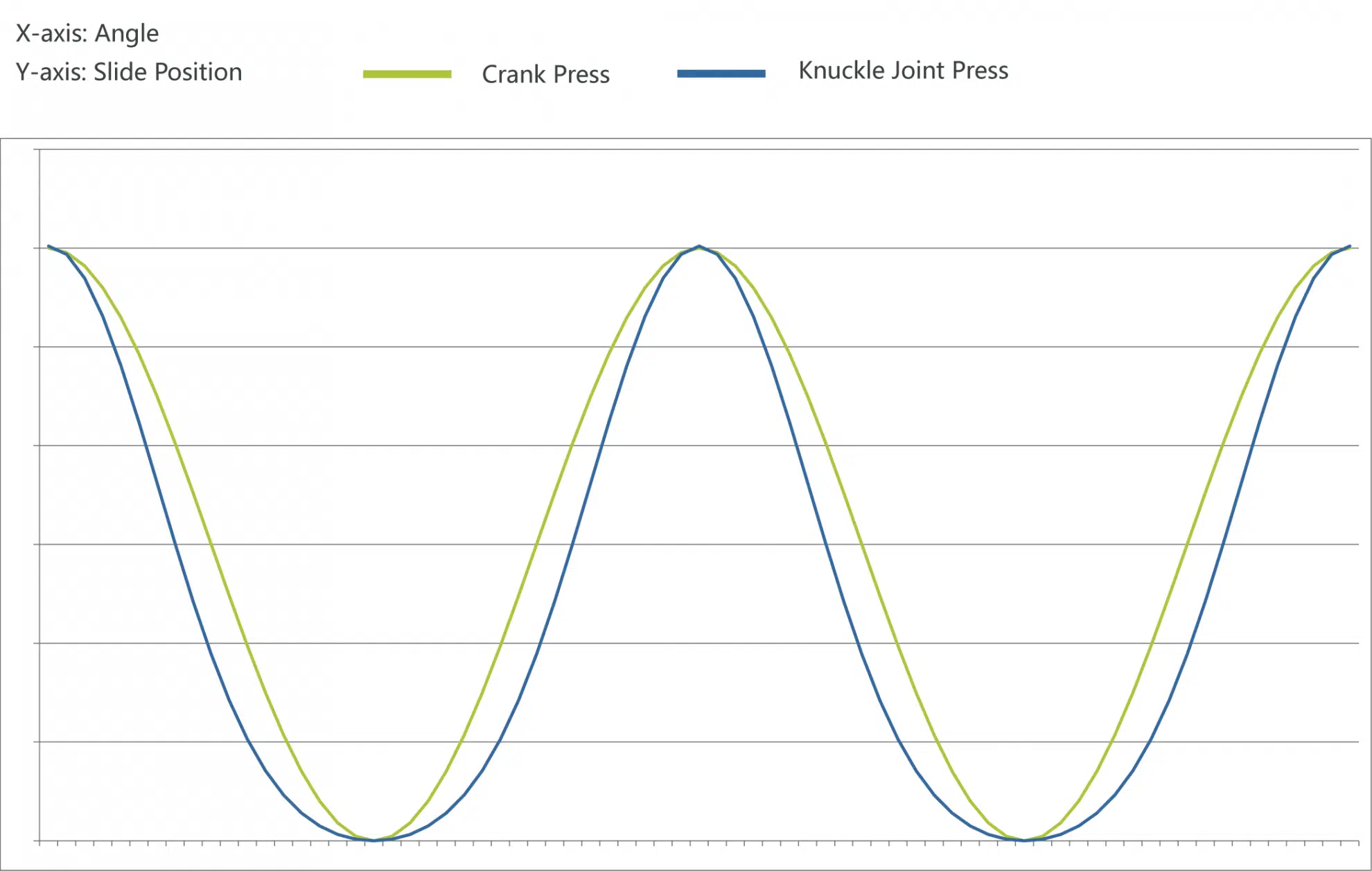Our presses cover multiple structural types, including C frame, gantry type with single plungers, gantry type with double plungers, toggle type,
underdrive, etc..
Tonnage ranges from 1 to 400 tons, including the world's smallest press THS-1 (1 ton) and heavy-duty press like CHD-400 (400 tons).
underdrive, etc..
Tonnage ranges from 1 to 400 tons, including the world's smallest press THS-1 (1 ton) and heavy-duty press like CHD-400 (400 tons).
For 80 ton and below, the lead time is around 1-2 months. For knuckle-joint and heavy-duty model (above 80 ton), the lead time starts from 2 months.
ISO 9001:2015 (Quality Management system), CE (EU Compliance)
Japan JIS B 6402:2020 Super Grade Accuracy
Our presses are widely used in metal forming, including stator rotor, lead frame, connector, chain, heatsink, terminal, canning, etc..
The appropriate press model and tonnage should be determined by material type and thickness, die specifications, etc.
For detailed consultation, please contact our technical sales: Nick Wu nickwu@mx-press.com.
For detailed consultation, please contact our technical sales: Nick Wu nickwu@mx-press.com.
1. You can find technical parameters of each press in website’s Product Page and download SPEC in the attachment.
2. Contact Technical Sales: Nick Wu (nickwu@mx-press.com)
2. Contact Technical Sales: Nick Wu (nickwu@mx-press.com)
We use ductile iron FCD500 in press main structure.
FCD500 has steel-competitive properties, distinctly stronger than gray cast iron. With high toughness, superior impact resistance and fatigue
durability, FCD500 is ideal for high speed operation. Meanwhile, with excellent castability and machinability, FCD500 is complex shapes
achievable and easier to machine.
FCD500 has steel-competitive properties, distinctly stronger than gray cast iron. With high toughness, superior impact resistance and fatigue
durability, FCD500 is ideal for high speed operation. Meanwhile, with excellent castability and machinability, FCD500 is complex shapes
achievable and easier to machine.
Crankshafts: Sourced from GIIHG, a Fortune Global 500 company.
Bearings: Sourced from Japanese NSK, Japanese KOYO, Deutsch FAG, etc.
Bearings: Sourced from Japanese NSK, Japanese KOYO, Deutsch FAG, etc.
FEA simulates physical systems through mathematical modeling.
Optimized structure with minimal slide deformation and enhanced rigidity is achieved through FEA.
Optimized structure with minimal slide deformation and enhanced rigidity is achieved through FEA.
Main structures of our press will go through annealing before rough machining.
Annealing is a heat treatment process. Frames exposed to high temperature for a long period, followed by slow cooling. The primary objectives are to relieve
internal stresses, enhance ductility and toughness, and develop specific microstructures.
Annealing is a heat treatment process. Frames exposed to high temperature for a long period, followed by slow cooling. The primary objectives are to relieve
internal stresses, enhance ductility and toughness, and develop specific microstructures.
Main structures of our presses undergo VSR treatment after rough machining.
By applying nondestructive sub-harmonic vibrations, VSR process relieves internal stress, stabilizes the metal and realizes press long-term precision.
By applying nondestructive sub-harmonic vibrations, VSR process relieves internal stress, stabilizes the metal and realizes press long-term precision.
Presses are often subject to dynamic imbalance during operation due to various internal and external factors.
Dynamic balancer can control and adjust the press’s motion status during operational process, effectively reducing vibration and ensuring stable
high-speed operation.
Dynamic balancer can control and adjust the press’s motion status during operational process, effectively reducing vibration and ensuring stable
high-speed operation.
We have 2 plants in Dongguan, Guangdong.
Plant I: R&D center + Machining center + QA lab
Plant II: Assembly center + Warehouse
Plant I: R&D center + Machining center + QA lab
Plant II: Assembly center + Warehouse
| Crank Press | Item | Toggle Press |
| Crank Connecting Rod Mechanism | Drive Mechanism | Toggle Linkage Mechanism |
| Standard sine wave Short dwell at BDC | Slide Motion Curve | Slower motion near BDC Prolonged pressure holding at BDC |
| Higher speed Simpler structure, easy to maintain Wide applicability Lower cost | Advantages | High BDC accuracy Extended die life Lower noise and vibration |
| Lower BDC pressure Limited accuracy | Limitations | Complex structure, higher cost Low mold compatibility Low SPM |
| General metal stamping, flexible production | Applications | Precision forming, deep drawing, small metal parts |


